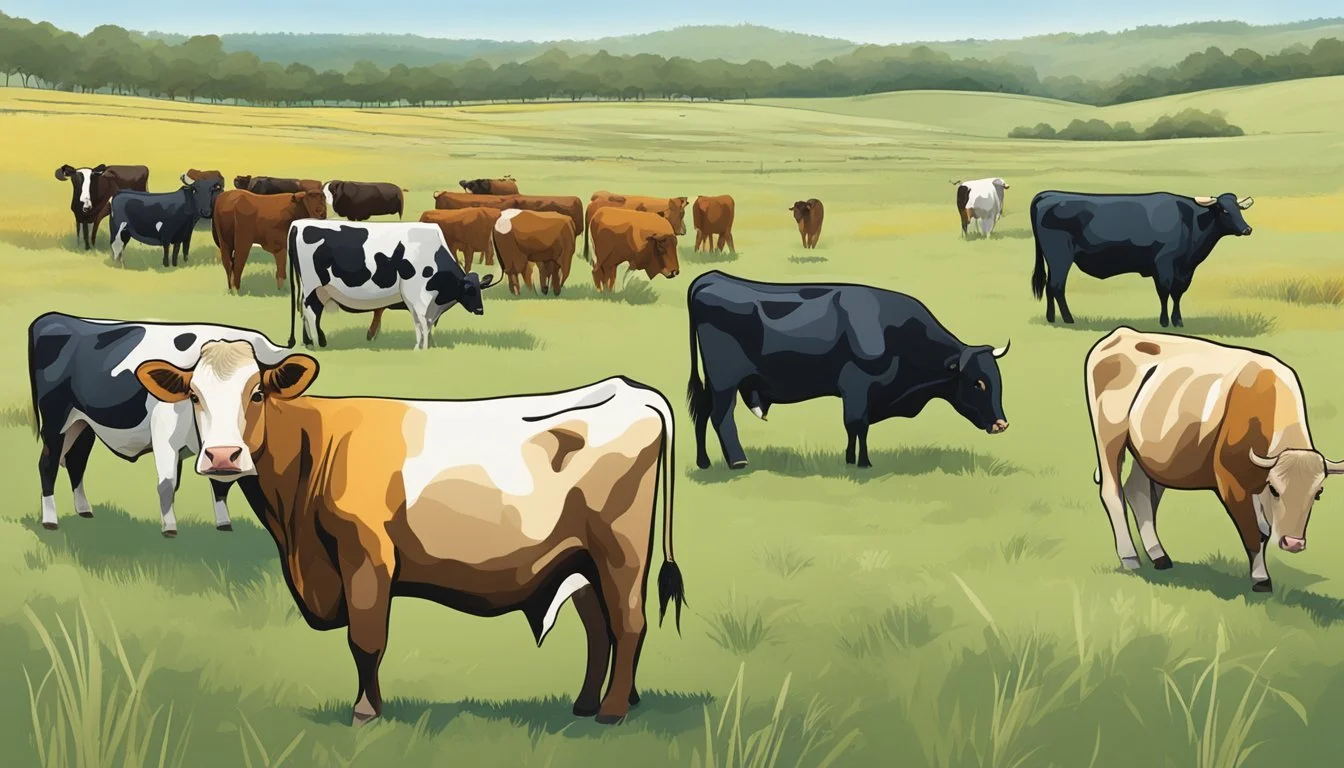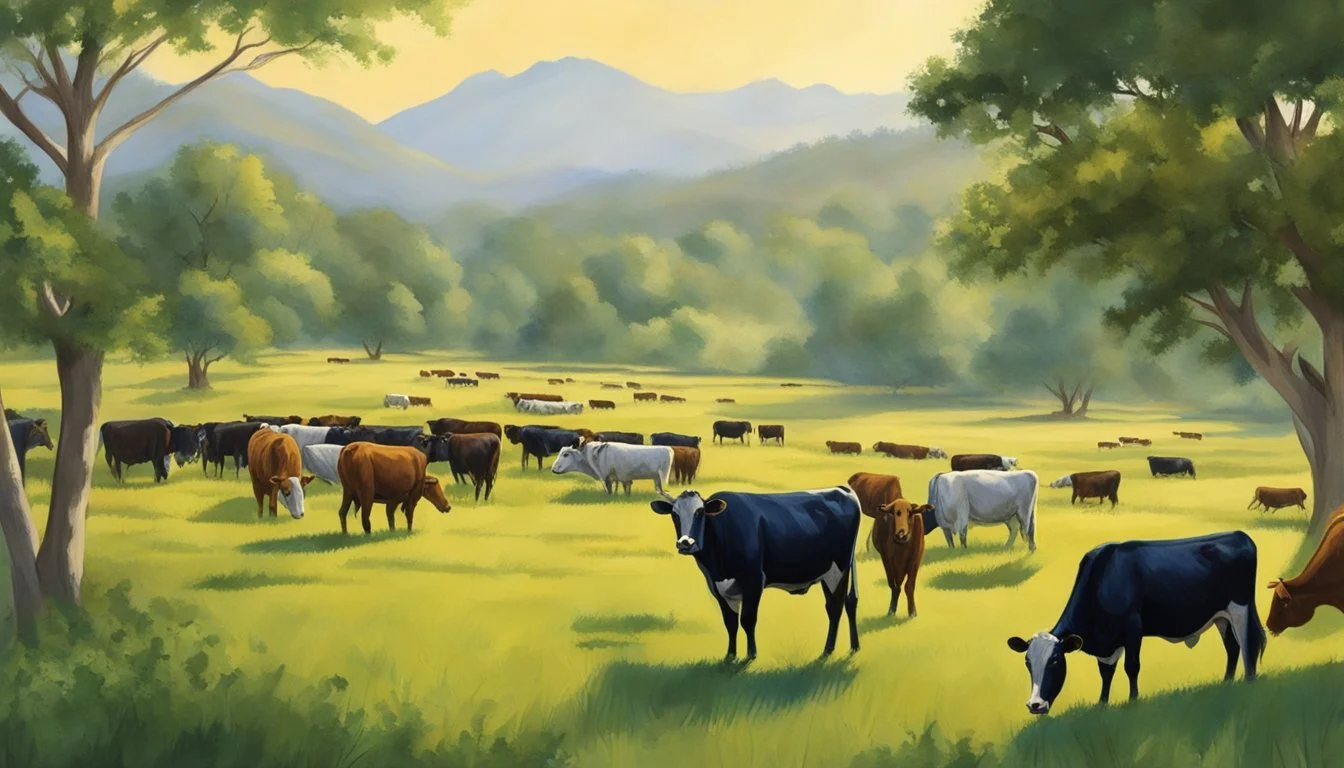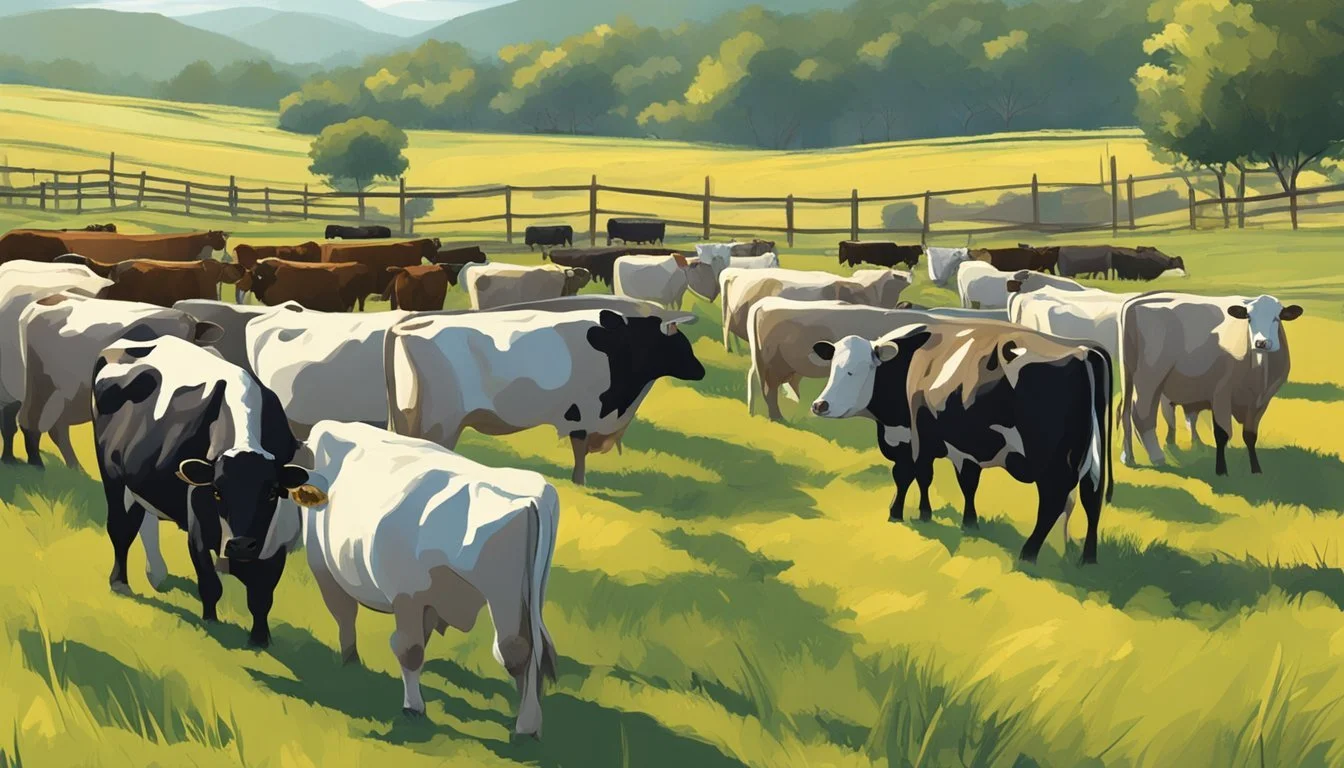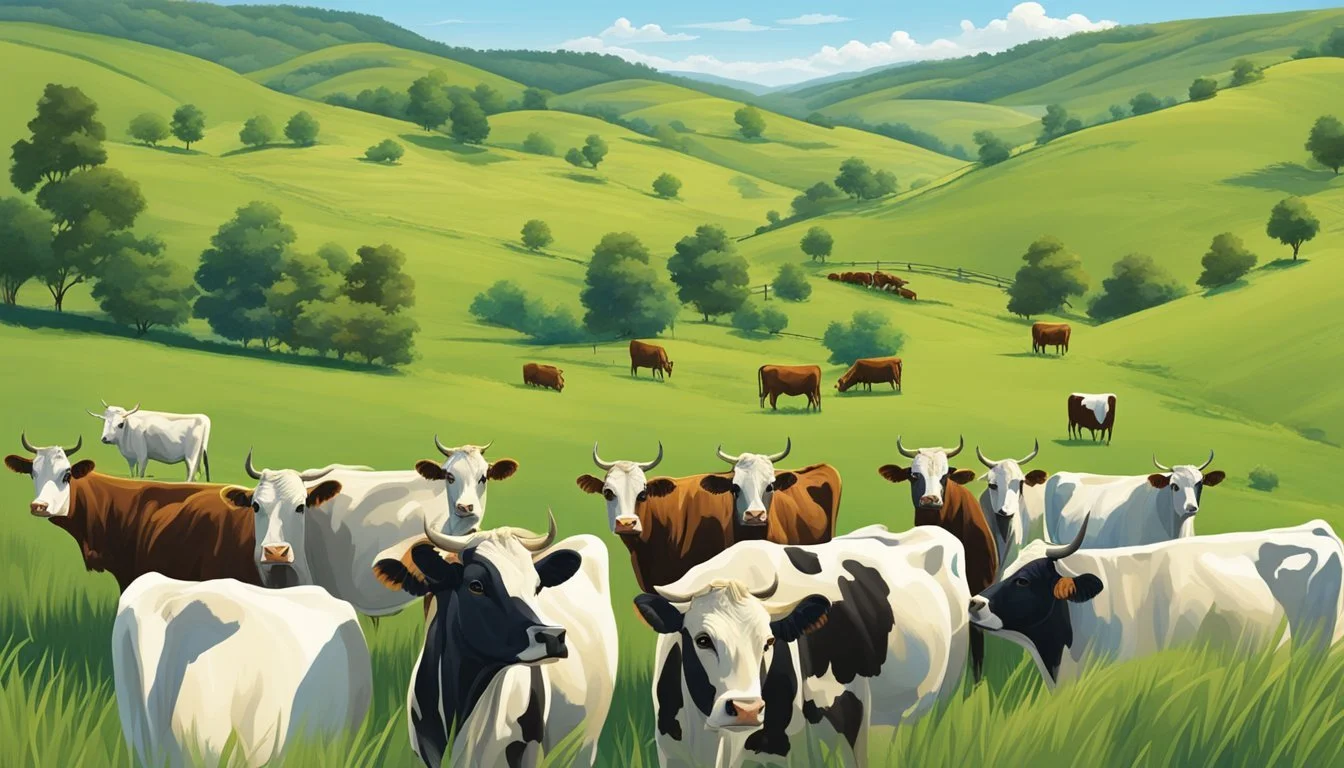What Are the Benefits of Raising Heritage Cattle Breeds?
Understanding Sustainable Livestock Practices
Raising heritage cattle breeds offers a multitude of benefits that extend beyond the individual farmer to the wider community and environment. Heritage breeds, which are traditional livestock breeds that were once commonplace on farms but are now at risk of extinction, serve as crucial repositories of genetic diversity. This diversity can provide resilience against diseases and changing climate conditions. Additionally, as they are often well-adapted to local environments, heritage breeds can thrive on pasture and forages, reducing the need for supplemental grains and inputs, thereby supporting more sustainable farming practices.
Preservation of these breeds is also a conservation effort, safeguarding the agricultural heritage and the biodiversity within livestock species. Heritage breeds often come with their own unique characteristics and qualities, such as resistance to specific diseases or the ability to thrive in harsh environmental conditions, which can be lost if these breeds go extinct. Maintaining such traits is essential as they could prove invaluable for future breeding programs aimed at improving commercial cattle breeds.
Moreover, heritage cattle can offer economic advantages to farmers. While they may grow more slowly than modern commercial breeds, they often require less intensive management, leading to potentially lower overhead costs. These cattle can also provide niche marketing opportunities, as some consumers are willing to pay a premium for products associated with conservation and sustainability. Heritage cattle products are often touted for their distinctive flavors, appealing to a segment of consumers interested in culinary diversity and food with a story.
Historical and Cultural Significance
Raising heritage cattle breeds is not only an agricultural activity but also a way to maintain a living legacy. This section delves into the historical value and cultural heritage that these animals represent.
Historical Value
Heritage breeds serve as a bridge to the past, carrying valuable genetic traits that have been naturally selected over centuries. The Livestock Conservancy emphasizes the importance of these breeds for their unique characteristics, which were integral to the survival and success of past generations. For example, some breeds have an inherent resistance to local diseases or are particularly adaptable to specific climatic conditions—a testament to their ancestry and the agricultural practices of the time.
Cultural Heritage
The role of heritage cattle in cultural heritage is substantial. They are often associated with traditional festivities, customs, and regional identities. These breeds embody the pastoral traditions of communities and can offer a sense of continuity with ancestors. The cultural heritage linked to these animals often includes specific husbandry methods, feeding practices, and even artisanal products such as cheeses and meats with unique flavors imparted by the heritage breed's characteristics.
Genetic Diversity and Conservation Efforts
Raising heritage cattle breeds is crucial for maintaining genetic diversity and aiding conservation efforts. These rare breeds embody valuable genetic resources that can enhance the adaptability and resilience of the livestock sector.
Preventing Extinction
Heritage breeds are at risk of becoming endangered due to the intensification of agriculture and the preference for a few high-yielding breeds. Through conservation efforts, small farms play a pivotal role in preserving these breeds. By maintaining diverse populations, they prevent the loss of unique genetic traits that might be crucial for future challenges like disease or climate change resilience.
Genetic Conservation
Genetic conservation is the deliberate effort to maintain and utilize the genetic resources inherent in heritage cattle breeds. Organizations like The Livestock Conservancy focus on protecting these breeds by documenting their traits, promoting their benefits, and encouraging breeders to sustain their populations. Such actions ensure that the genetic diversity of these breeds is not only preserved but also remains functional within agricultural systems.
Role of The Livestock Conservancy
The Livestock Conservancy is a key player in breed conservation. They classify breeds into various categories of endangerment, from "critical" to "recovering," highlighting the urgency for conservation actions. By providing support and resources to those raising heritage breeds, The Livestock Conservancy works to bolster the population numbers of these valuable yet endangered breeds, ensuring their traits are not lost and can be passed on to future generations.
Environmental Benefits
Heritage cattle breeds contribute significantly to sustainable agriculture. They offer unique advantages well-suited to environmentally-conscious farming methods.
Sustainable Farming
Heritage cattle are an integral part of sustainable farming practices. Given their longer lifespans and improved fertility, they contribute to a resilient farming operation. A key aspect is their foraging ability on pasture, which promotes soil health and reduces reliance on conventional grain feeding. By enhancing biodiversity and maintaining the balance of local ecosystems, these breeds essentially minimize the environmental footprint of livestock farming.
Adaptation to Local Climates
The resilience of heritage cattle breeds to local environmental conditions plays a pivotal role in sustainable agriculture. They have developed natural resistance to various local diseases and parasites, which reduces the need for chemical treatments and interventions. This innate resilience ensures these breeds can thrive in a range of climates, from hot and humid to cold and arid, without significantly impacting resource utilization.
Grass-Based Dairying Advances
Grass-based dairying represents an ecological step forward within the dairy industry. Heritage cattle typically excel in converting grass into milk and meat, which has a lower environmental impact compared to grain-fed systems. This approach aligns with grass-based dairying principles that emphasize the health of the livestock, the land, and the end consumer. It also underlines the sustainable ethos by emphasizing the importance of natural grazing patterns and reducing the carbon footprint of dairy operations.
Agricultural Practices and Preservation
The rearing of heritage cattle breeds embodies sustainable agricultural practices and plays a pivotal role in the conservation of livestock diversity and traditional farming culture.
Traditional Farming Techniques
Heritage cattle are typically associated with traditional farming techniques that have been honed over centuries. These breeds have adapted to local environments and, as such, are integral to the preservation of ecological niches. Farmers utilizing these breeds often rely on age-old methods of husbandry, which can contribute to maintaining the genetic diversity of the cattle while upholding regional agricultural heritage.
Grass-Based Livestock Management
Grass-based livestock management is a cornerstone of raising heritage cattle. These breeds are often well-suited to converting natural forages from pasture into milk and meat, reducing the need for grain-based feeds. This form of management supports soil health and biodiversity, aligning with environmental sustainability objectives. Heritage cattle breeds' ability to thrive on grass allows farmers to manage their lands more effectively and sustainably.
Microgrant Programs for Preservation
Microgrant programs play a crucial role in the preservation of heritage breeds by providing critical funding and resources to small-scale farmers. These programs, backed by organizations like The Livestock Conservancy, offer financial support that assists in maintaining diverse breeds and ensures the survival of traditional livestock genetics. They help farmers cover costs associated with the care of heritage breeds, promoting an agricultural system that values diversity and sustainability.
Economic Advantages
When it comes to the economic benefits of raising heritage cattle breeds, farmers often capitalize on niche markets and demand, along with finding value in their compatibility with small farms and homesteads. These strategic advantages can lead to sustainable profits and secure a market segment eager for products linked to traditional and environmentally friendly farming practices.
Niche Markets and Demand
Heritage cattle breeds possess unique characteristics that appeal to specific niche markets, which often value taste, rarity, and a legacy of traditional farming methods. Demand for heritage cattle products is typically higher in such markets because consumers are willing to pay a premium for distinct flavors and quality. For farmers, this means the opportunity to set higher prices for meat, dairy, and other related products, yielding better economic advantages over conventional offerings.
Value for Small Farms and Homesteads
Small farms and homesteads derive considerable value from raising heritage cattle breeds due to their adaptive nature and lower production costs. These breeds often require less intensive care, are resilient to diseases, and thrive on small farms where grazing options might be limited. They contribute to diversified farming systems as well, where they can help maintain the health of pastures and reduce dependency on commercial feeds. For farmers operating in smaller scales, these attributes translate into significant savings and a more economically viable enterprise.
Health and Quality of Produce
Heritage cattle breeds are known for their superior meat quality and distinct milk characteristics. These breeds often produce milk with higher butterfat content and meat with a flavorful profile, cherished by consumers who prioritize taste and quality.
Meat Quality and Flavor
Heritage cattle breeds tend to forage on a diverse natural diet, predominantly grass, which significantly influences the flavor of their meat. This grass-fed approach leads to lean beef with a rich, nuanced taste distinct from grain-fed counterparts. For example, the Ancient White Park cattle are renowned for their high fertility and produce flavorful meat that is not only tender but also has a unique taste profile prized by culinary enthusiasts.
Milk Production and Butterfat Content
When it comes to milk production, heritage cattle breeds may not always match the high output levels of commercial dairy breeds, but they do excel in butterfat content. For instance, the milk from Guernsey cattle is often richer in butterfat, making it ideal for producing creamy dairy products like butter and cheese. This higher butterfat content is largely preferred by consumers looking for rich and nutritious milk. The unique genetic makeup of these breeds not only contributes to sustainable livestock farming but also ensures a quality of produce that is often unmatched by modern commercial breeds.
Breeding and Livestock Health
Raising heritage cattle breeds offers several benefits in terms of breeding and livestock health. These animals demonstrate excellent fertility, robust hardiness, and commendable longevity, contributing to their appeal for conservation and sustainable farming initiatives.
Fertility and Reproductive Success
Heritage breeds are often recognized for their excellent fertility, which is a cornerstone for successful livestock production. Their ability to naturally mate and effectively reproduce ensures the continuation of the breed. This is particularly crucial for heritage breeds, as maintaining genetic diversity is essential for their conservation. These breeds have evolved over time to become well-adapted to their local environments, leading to higher reproductive success rates compared to some modern breeds that might require more intervention.
Hardiness and Disease Resistance
Heritage breeds display a remarkable level of hardiness and disease resistance. Through natural selection, these breeds have acquired a resilience to local diseases and parasites, reducing the reliance on pharmaceutical interventions. This inherent robustness is not only a testament to their adaptability but also a valuable trait that supports the health and wellbeing of the herd. Farmers find that investing in these breeds translates to lower veterinary costs and less downtime due to health issues.
Longevity and Survival Rates
The life expectancy of heritage cattle tends to be longer, which is indicative of their overall health and vitality. This longevity is beneficial both economically and genetically, as longer-living animals contribute to the gene pool for an extended period. Moreover, higher survival rates in calves and adult animals alike mean that farmers can enjoy a more stable and productive herd over the years, securing both their financial investment and the future of these time-honored breeds.









